The term “gong fu” translates to “achievement through great effort”. It’s the same word as “kung fu”, but spelled differently . . . because English translations suck that way.

Gong fu also refers to a method of brewing tea, signified by the use of short, successive steeps to bring out a given tea’s extra dimensions. The term also refers to a graded style of tea, often used interchangeably with the term “Congou”. Case in point, Keemun Gong Fu or Rose Congou.
It’s all kinds of an achievable headache, as Chinese tea terms often are, but it’s used most effectively to describe the grade and style of three types of black teas from Fujian province, China. There is Bai Lin Gong Fu, Zheng He Gong Fu, and Tan Yang Gong Fu.
Up until this month, I’d only tried Bai Lin . . . and loved it. If it were a woman, I would’ve wooed it . . . with great effort.

Thanks to Four Seasons Tea, I was given an opportunity to try a second kind – the Tan Yang stuff. It’s named for the place that originally produced the style – Tan Yang village in Fu’an county, Fujian province. Located west of the Baiyun Mountains.

Doesn’t ring a bell? Don’t worry, didn’t to me, either.
Four Seasons carried four different grades of Tan Yang, which were ranged a lot like Johnny Walker – by colored label. I was in possession of the Black, Red, and Orange labels, respectively.
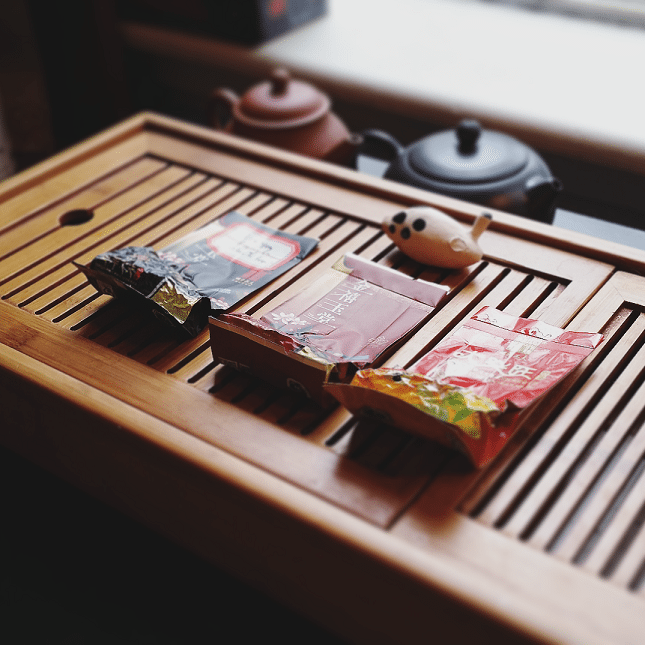
I’m not entirely sure what sets these labels apart, but each one did smell differently. Owner Jeff Kovac even mentioned in one of his e-mails that these were among his favorite black teas – ever. On his website, he also said he had an exclusive relationship with the grower, Dai Xing Wang. With that kind of recommendation, I was quite excited to dig in. And on a very uneventful day off, I finally did.
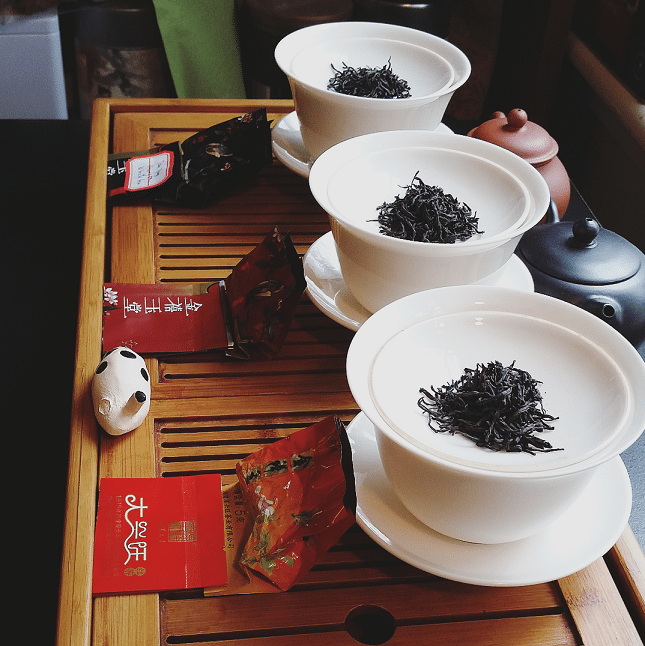
I decided to dip into all three at the same time. For brewing, instead of a gong fu approach, I opted for Western style –1 tsp. of leaves brewed for three minutes with boiled water. Just for ease and time. I’m sure it would hold up to gong fu brewing just fine, but sometimes the laziest approach is the only approach.
Tan Yang Gong Fu Jin Xi Yu Tang – Black Label
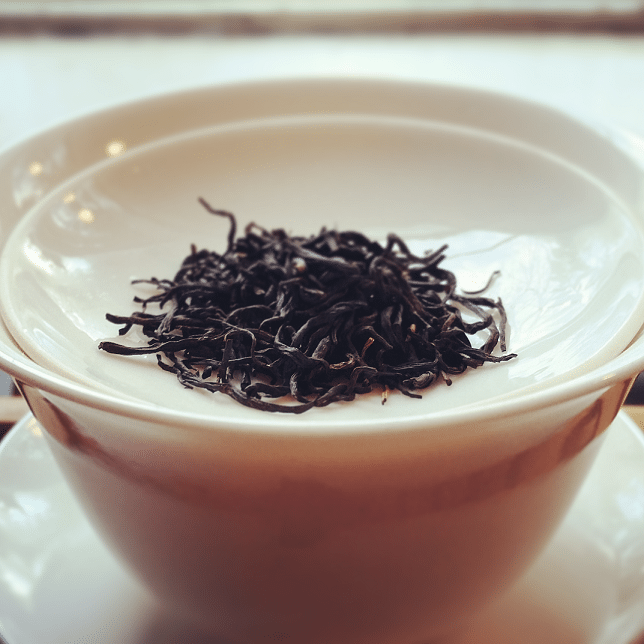
The leaves were small-cut, like a Fujian Lapsang Souchong or even an Anhui Keemun, but the smell they gave off were like neither. Nor like anything I’d ever encountered before. Four Seasons Tea mentioned that it contained notes of fruit, flowers and cream, and quite a bit of that showed up in the aroma. The part that alarmed me the most was how sweet they smelled – like someone dipped each individual leaf in white chocolate with a giggle.
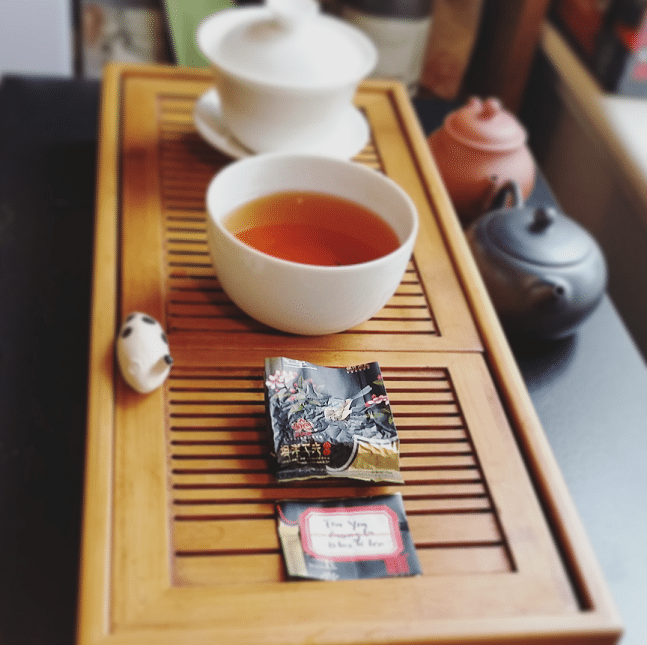
The liquor brewed a soft but dark red; the typical way you’d think a Chinese “red tea” would. The aroma was equally soft and inviting, imparting a raisiny quality. On taste, it started off with a faintly bitter forefront, but that transitioned to a feeling of fermented grapes, nuts and a finish of – weirdly enough – chocolate-malted barley.
Tan Yang Gong Fu Jin Xi Yu Tang – Red Label

The Red Label had more of a traditional Chinese black tea smell – something both malty and woodsy with a hint of pine-roast. Appearance wise, I couldn’t really tell a difference between it and the Black Label – standard small-cut black tea fair. The aromatic notes were also similar to the Black Label, but less sweet and more robust.
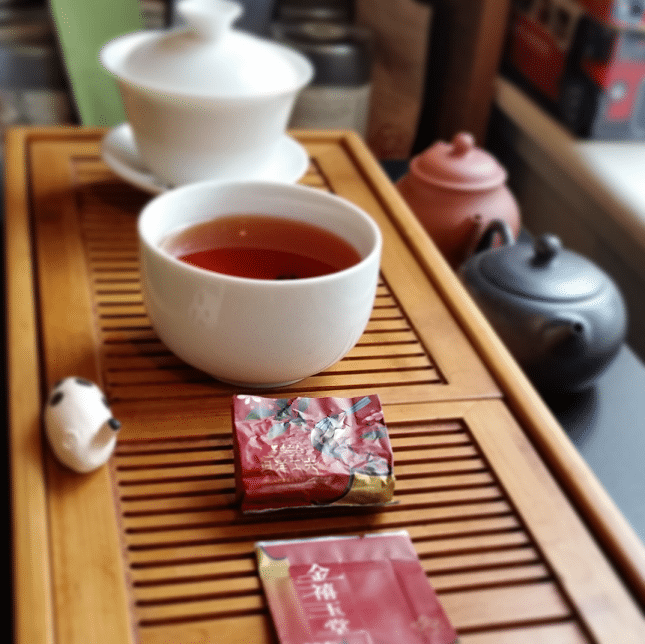
The Red Label brewed bold copper, resembling a Keemun on first impression. The aroma dispelled that comparison with notes of ripe plums. On taste, wow . . . it was plum wine. I have no other, subtler way of describing it. This tasted like an oak-aged port made manifest as a tea, somehow. The only other black tea I’ve tried that comes close to this odd flavor was from South Korea. The finish was just . . . velvety.
Tan Yang Gong Fu Jin Chan Xiang – Orange Label
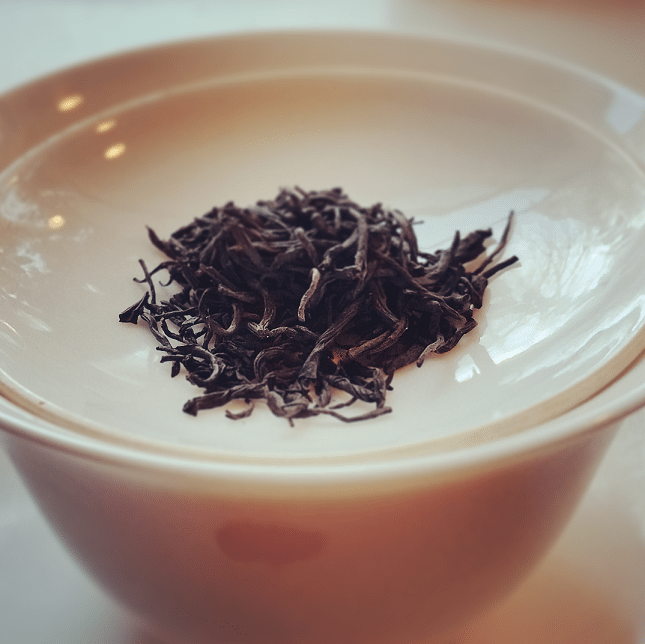
The Jin Chan Xiang also looked like a . . . well . . . black tea on appearance. Same type o’ leaves, but the smell was something . . . whoah. Four Seasons compared it to milk-dipped breakfast cereal. I’d agree, but with a twist. It was a kid’s breakfast cereal. The sweet kind. This smelled like friggin’ crunchberries! I think I’ve used that “taster note” only one other time years ago. The fragrance was like Oriental Beauty concentrate dipped in steamed vanilla almond milk.

The Jin Chan Xiang also brewed to a lovely, bold copper but with none of the bravado of either the Black or Red. Instead it crept through the door, curtsied slightly . . . if sweetly. Which was also how it smelled – sweet. It had the same “plum-‘n-raisin cuddling with nuts” thing that the other two Tan Yangs had, but with a bit more grace to its step. Fruity yet refined.
I sipped with a slurp and found my tongue was bombarded with several strange notes of nameless origin. Fruits from parts unknown, vanilla creams of alien make, roast from fires of blue flame. That sorta nonsense.
After the brewing session, I took the spent leaves from all three gaiwans . . . and dumped ‘em in a pot for later use. That night, I decided to brew ‘em up to see how they fared haphazardly blended together. The results spoke for themselves.
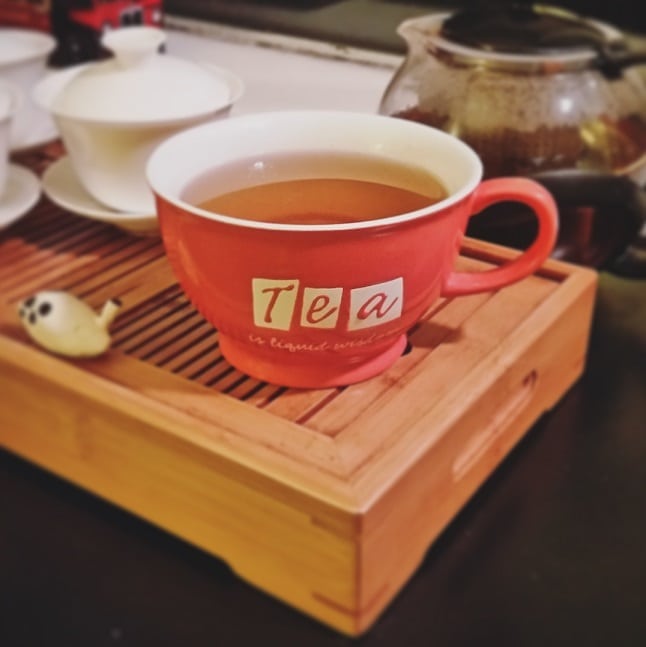
By that, I mean it was magic.
A couple of days later – on a particularly difficult work day – I took the last of my Black Label, and blended it with the last vestiges of my Arya Sidrapong Tara. The two played off each other very well.
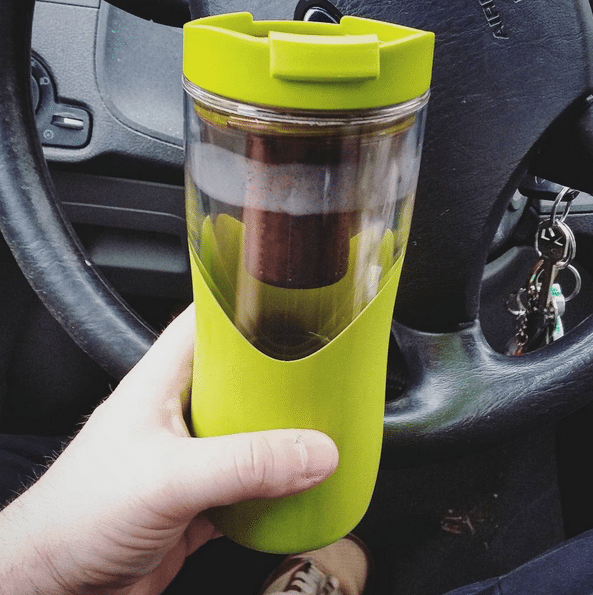
And it kept me mostly sane.
A couple of days after that, my mother bought me a scone for my pre-work breakfast. I paired it with the last of my Red and Orange Label.
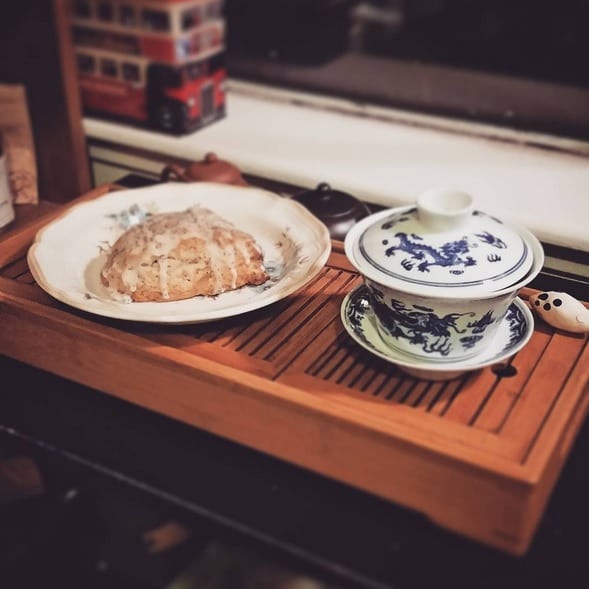
Best Pairing!
On a more serious note, I can honestly say the two weeks that passed between brews were some of my most difficult. Upheavals at work, Seasonal Affected Disorder kicking in, and a general lack of self-worth and stress were taking their toll. But thankfully . . .
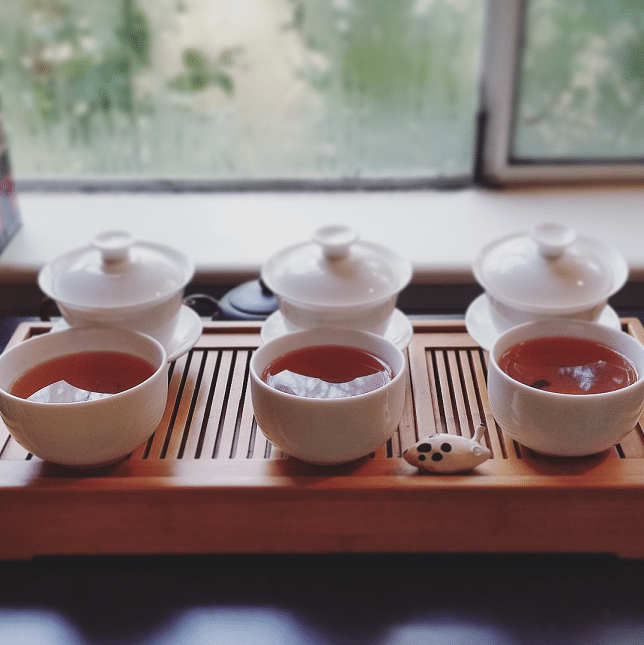
Some shred of sanity was achieved . . .
With great effort.

Leave a Reply